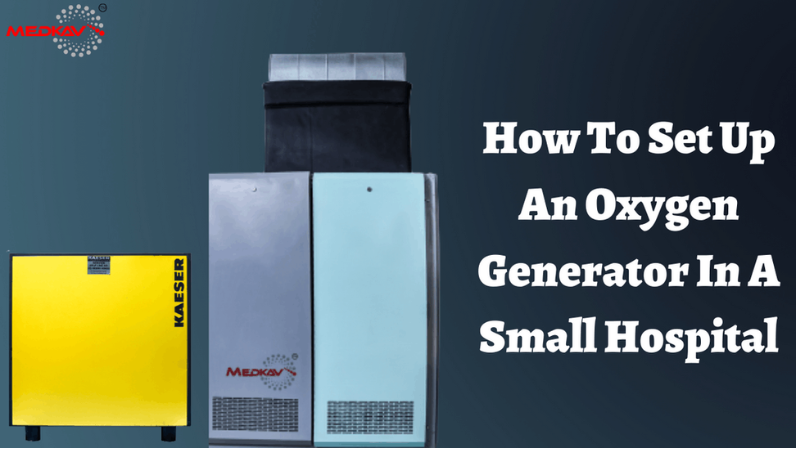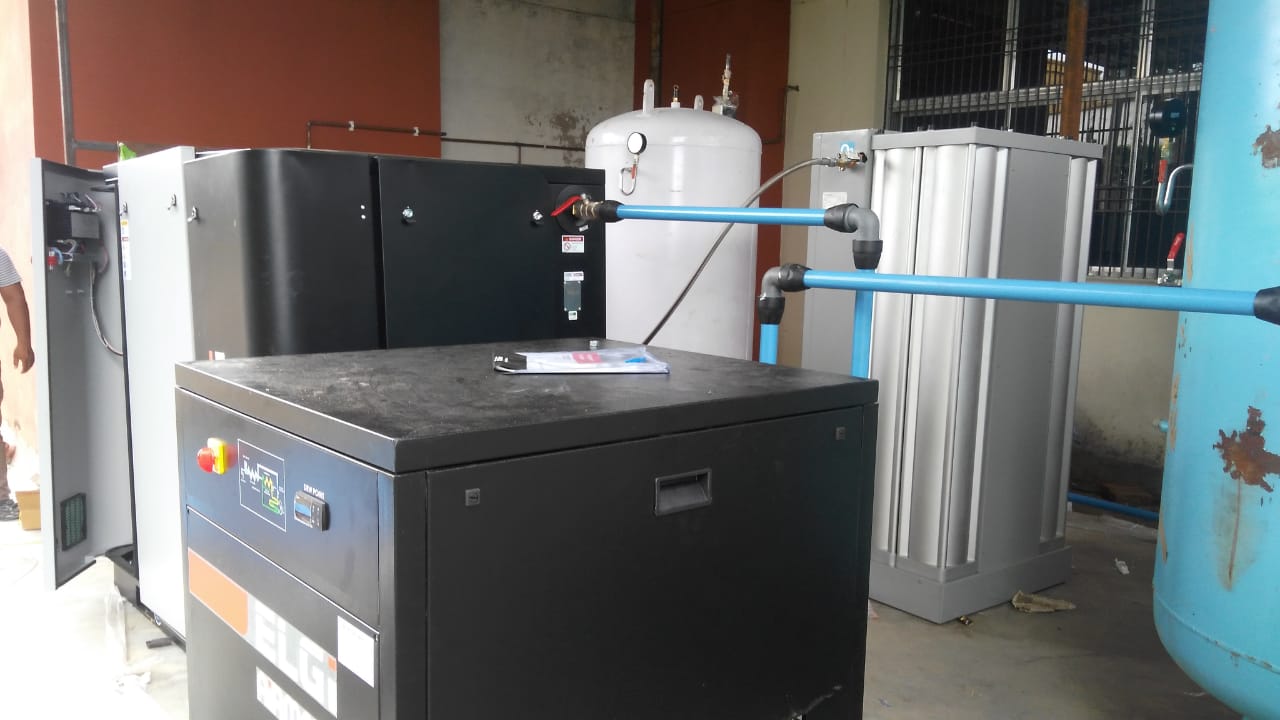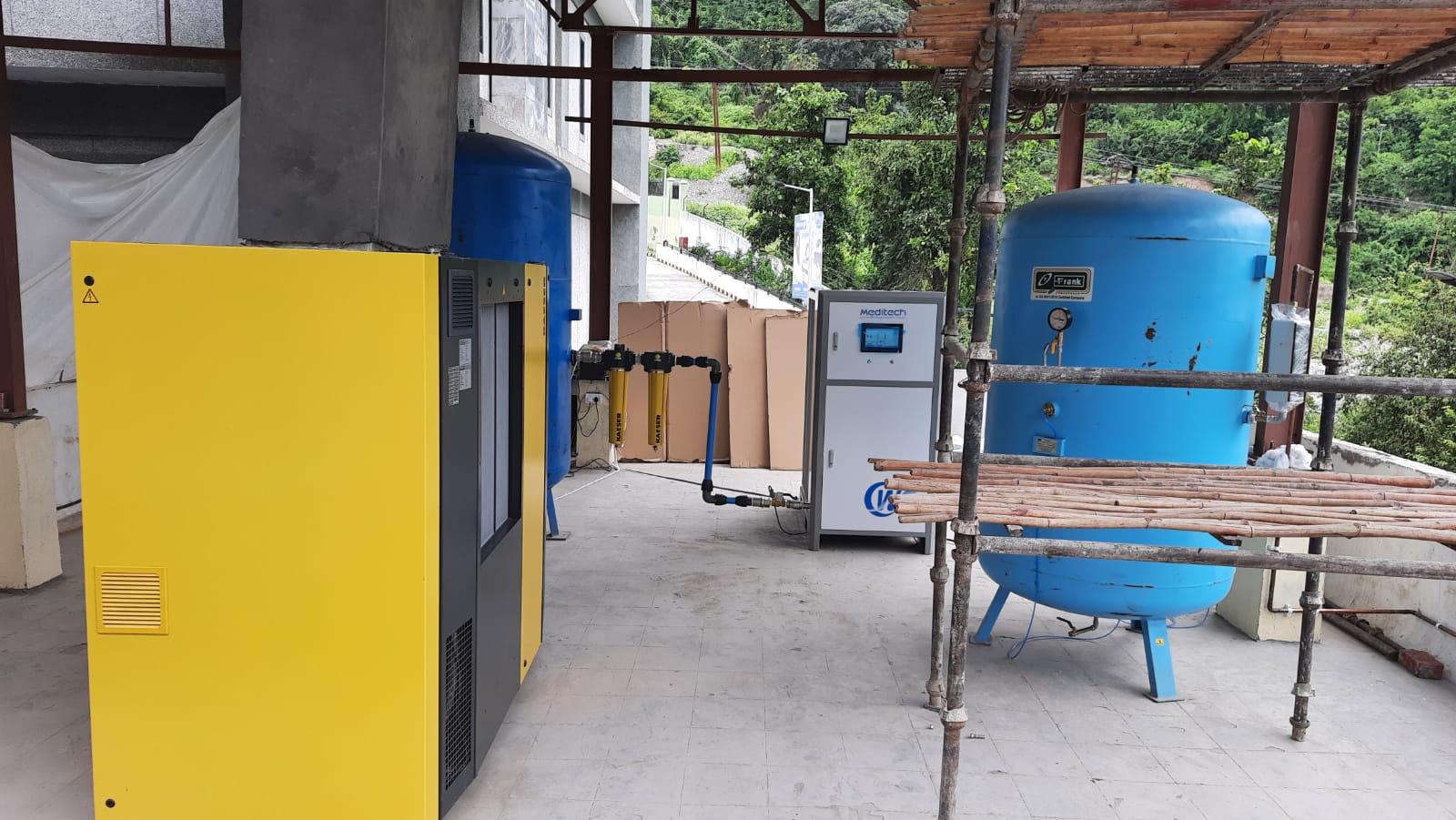A relatively expensive industrial method produces oxygen cylinders. A specific valve (regulator) and a flow metre are required for an oxygen cylinder to release oxygen in a controlled manner. The usage of oxygen from cylinders without a flow metre is exceedingly wasteful, and it is also extremely dangerous without a regulator. Not all oxygen cylinders are created equal; at least five different types of cylinders are used in various countries. Only one type of oxygen cylinder can be used with a regulator.
Before obtaining regulators, gather precise information on the type of oxygen cylinder in use from the local oxygen supplier. This should be verified by a hospital employee with technical competence, such as an anaesthetist, a chest physician, or a properly qualified hospital technician. There is an international standard for identifying oxygen cylinders, which states that they must be painted white. Regrettably, the guideline is frequently disregarded. Medical oxygen cylinders made in the United States are often green, whilst those made in Commonwealth countries are typically black with white shoulders. Industrial oxygen cylinders should also be prominently labelled, however this is not often the case.
Never use a cylinder to give gas to a patient unless you know what's in it. It takes more than having oxygen cylinders on hand to get oxygen to patients. You'll need a whole working system in place, including not only the oxygen delivery apparatus, but also staff who have been trained to run it and a system for maintenance, repair, and spare parts supply.
A full system for utilising oxygen in cylinders must include the following components:
• Oxygen cylinders with a consistent supply
• The cylinders must be transported to the hospital.
• Procedures to make sure the hospital orders the right amount of oxygen
Apparatus for delivering oxygen to the patient from the cylinder:
- An appropriate regulator
- A flow metre is a device that measures how much water is flowing through
- Tubing for delivering oxygen
- An air humidifier
- An oxygen tube for the patient's face
- A nasal catheter (or mask) for oxygen delivery to the patient's airway
• Someone who has had clinical training in administering the proper amount of oxygen in the proper manner to those who require it.
• A person with technical training who inspects, maintains, and repairs the device when necessary.
• Adequate budget to ensure that the oxygen supply is always available.
MUST-READ ||
How To Set Up An Oxygen Generator In A Small Hospital
It is relatively easy to build a general-purpose oxygen generator, it can be used to feed small torches as well as other jobs in the house workshop. This generator should be installed in a backyard outside the house to provide an exhaust for hydrogen gas which we will not use and this is highly flammable. To begin with.. you need a piece of PVC pipe about four inch diameter in about 10 inches long, these sizes are not critical and largely depend on the size of the rest of the components you'll be using, then you need a transparent plastic box with an airtight cover similar to boxes used to store packages in the cupboard... another material you'll need is a PVC with user coupling to fit the PVC to a thin transparent type hose with one
quarter inch inside diameter. In order to hook the hose..,use a plastic barb fitting of the proper diameter screwed or glued to the PVC pipe adapter, this hose will carry the oxygen into the room or area where it is going to be used. A small PVC ball valve must be placed at the free end of the hose in order to control oxygen flow, he also had to get himself a PVC swamp cooler float. Also, you need two pieces of insulated 10 gauge copper wire in two colors one Lynx is red in the other is black, we'll also use a pair of 10 inch long stainless steel screws each of the screws will carry a pair of nuts for attaching it to the copper wire, we are going to need a small transformer for stepping the line voltage down to about 24 volts and the 3m 600 volt diode bridge. Let's first look at the Assembly of the oxygen producing cell...,
• First the adapter must be attached to 1 end of the PVC pipe it must be perfectly sealed with none leaks...next,
• strip the insulation off the red wire so it will be curled as an eyelet this eyelet should snugly fit on one end of the chrome steel screws and kept in situ by the 2 nuts you need to cover the copper wire with some waterproof sealant so it doesn't touch the electrolyte..,
• then fasten the screw to the within of the PVC tube with a plastic strip so the water inside the PVC pipe is pushed down by the oxygen produced but preventing the oxygen gas from escaping outside the PVC pipe...,
• Next the PVC tube adapter should be attached to the lathe of the Box near one in every of its ends by means of the plastic board filling by using rubber gaskets to stop any leakage, please check the PVC oxygen generating cell has enough space to be suspended in. far from the underside of the box if necessary the PVC pipe are often slightly trimmed so as to satisfy this condition, the assemble sets you appear as if the Troy, at now the seal is prepared to come up with the oxygen but it is necessary to feature an output for hydrogen, i suppose also generated during this process the black cable must be attached to the remaining chrome steel screw by using this other screw and it's pair of nuts and waterproof sealant..,
• this screw will be suspended by attaching the black wire to the lid of the box this screw should be completely covered by the electrolyte the least bit times, at the proper end of the box a hole is created SO on fit a one-inch diameter PVC pipe, this pipe should be about six feet long so as to supply an exhaust for the hydrogen to the outdoor air. An elbow arrangement is placed at the highest end of his pipe to stop rain water from entering he also had to form a hole in one side of the box to put in a swamp cooler float connected to a chilly shisha through a chunk of thin hose the box lid and every one gas and water filling must be perfectly sealed and free from leaks.
• The subsequent step is to dissolve about one ounce of caustic soda NaOH in a very large glass of water so empty it into the plastic box, now you want to open the valve filling the float in order that the box is filled to the required level. The oxygen outlet valve must even be opened to permit air to flee from the oxygen generating cell and have the chrome steel screw inside a PVC pipe covered by the water.
• Next comes the electrical connection. The transformers within the diode bridge are used because the power supply and the connections are very simple. The ends of the transformer secondary coil head to the diode bridge at its AC input within the end the positive terminal of the diode bridge goes to the red wire of the oxygen generating cell and also the negative terminal of the bridge goes to the black wire from the hydrogen generating screw, the transformer primary goes as was common to an everyday outlet either 127 or 220 volts ac counting on your country if the plastic box is transparent bubbles should be seen to come back off the hydrogen generating stainless-steel screw, the bubbles should be abundant and must form a cloud round the screw and start to rise and burst on the surface of the water these bubbles are hydrogen gas that being lighter than air goes dead set the free outdoor air through the pipe we've installed likewise being oxygen bubbles also are produced inside the generator sail round the oxygen generating screw this gas is oxygen which must be taking off of the holes going out from the sail and into the house if we leave this valve open oxygen will still flow as long because the water covers both stainless-steel screws since we are extract the oxygen in hydrogen from the water the amount of water will slowly decrease but the float valve will keep it constant.
• On the other hand if we shut off the oxygen outlet valve the pressure inside the cell will begin to race which is able to cause the water level inside the cell to drop thus decreasing the realm of the screw covered by the water. Thus, reducing the number of oxygen produced, if the water level drops low enough the reaction stops. If yet again we want more oxygen gas we simply open the valve the to oxygen stored within the cell begins kick off from the cell the water level goes up what it covers the screw and also the reaction starts again, this suggests we are going to have a machine which may produce oxygen continuously as long because it includes a constant source of water in an electrical in power supply. please keep mind that the hydrogen generating screw must be completely covered by water in the slightest degree times whenever the oxygen outlet valve is shut off the water level within the Box goes slightly up, so there should be lots of room for water to effuse of the oxygen generating cell to prevent the electrolytic reaction when needed, none of the values or dimensions given are absolute.
• for example, you'll use more
than one stainless electrode for grouper, more contact surface and more oxygen gas produced the voltage supply to the cell may be higher on the opposite hand an oversized box up a bigger oxygen generating cell are often used the principle will remain the identical. A word of caution both hydrogen and oxygen are often very dangerous to cause explosions or fires if not handled properly a roomful of oxygen can cause the ignition of some flammable materials. Since pure oxygen enhanced combustion of most materials it can even ensure metals turn furthermore hydrogen gas is very flammable and might pose a risk of fireplace or explosion
when handling any of those gases make certain to avoid being near open sparks or flame.
How To Set Up An Oxygen Concentrator In A Small Hospital
Many hospitals have installed oxygen concentrators since cylinders aren't always accessible. Concentrators provide a more consistent and cost-effective oxygen supply than cylinders. Zeolite is employed in an oxygen concentrator to extract oxygen from nitrogen within the air. Concentrator-produced oxygen is a minimum of 90% pure and may be utilised within the same way as oxygen from cylinders, with the identical positive results.
Oxygen concentrators use far less energy than fractional processes and have the additional advantage of having the ability to form oxygen within the hospital room or at the patient's bedside, as long as electricity is out there (a small concentrator uses about 350 W). A concentrator costs about half the maximum amount as a year's supply of oxygen from cylinders, and therefore the cost of electricity and spare parts is minimal.
A full oxygen delivery system supported concentrators necessitates:
• Concentrator manufacturer and supplier
• within the hospital, there's either mains electricity or a generator.
• System to make sure that a sufficient supply of huge spare parts is acquired and kept centrally, which each hospital encompasses a sufficient supply of smaller spare parts, like air intake filters.
• Apparatus for delivering oxygen to the patient from the concentrator, which includes:
- A flow metre may be a device that measures what proportion water is flowing through (included in every concentrator)
- Tubing for delivering oxygen
- An air humidifier
- An oxygen tube for the patient's face
- A nasal catheter (or mask) for oxygen delivery to the patient's airway
• one that has had clinical training in administering the right amount of oxygen to those who require it within the proper manner.
• someone with technical knowledge who is to blame for keeping the apparatus in excellent working order and repairing it when necessary
• A sufficient budget to confirm that the oxygen supply is often available.
A concentrator must meet the subsequent requirements for operation in a very district hospital:
• Be ready to perform during a style of situations:
- Ambient temperature of up to 40 degrees Celsius
— Up to one hundred pc ratio
- Voltage fluctuations within the mains
- Extremely dusty conditions
• Be unable to produce oxygen at a level of but 70% oxygen
• Have an entire service manual there.
• Have enough extra components to last two years.
If a hospital intends to use oxygen concentrators, a minimum of two should be purchased. confine mind that no piece of apparatus will survive indefinitely, especially if it's misused. Hospitals must allow routine maintenance every 5000 hours of operation. Servicing the equipment isn't difficult and, if necessary, may be done by the user following a quick training session.
MUST-READ ||



